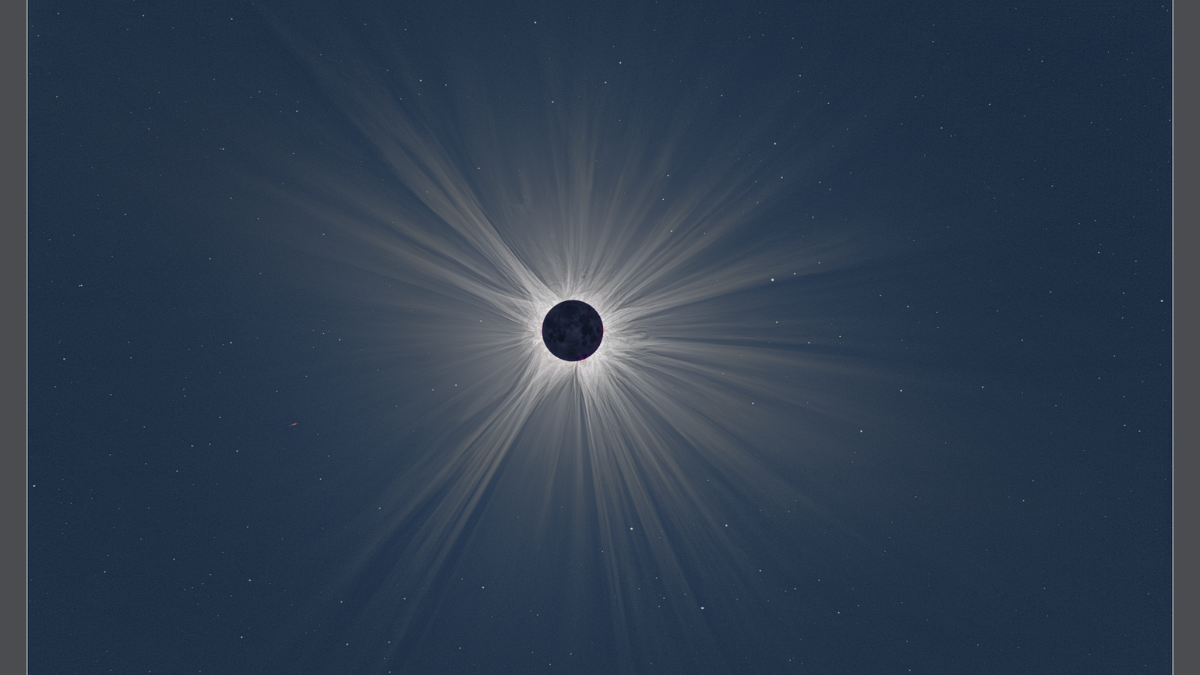New mission to create total solar eclipses in space
Scientists are working on the launch of a spacecraft mission which will allow them to view the Sun’s atmosphere in more detail than ever before.

The proposed MESOM mission will enable an international team of researchers to study the conditions that create solar storms, leading to improvements in forecasts of space weather on Earth.
The MESOM spacecraft will fly on a peculiar trajectory enabled by the gravitational attraction of the Earth, the Sun and the Moon, and will use the shadow of the Moon to re-create a total solar eclipse in space once every lunar month lasting almost 50 minutes.
Total solar eclipses seen from Earth are much shorter and only last between 10 seconds and 7.5 minutes, with the annular solar eclipse in the Southern Hemisphere this Wednesday 2 October expected to last around 7 minutes.
Creating a longer eclipse in space will enable the MESOM team to take high-quality images and measurements of the Sun’s corona, filling gaps in existing understanding of the physical processes taking place in the solar atmosphere that lead to space weather.
Space weather is not a danger to people or animals on Earth but solar flares and eruptions from the Sun known as coronal mass ejections can cause severe disruption to power grids, satellites and other communication technologies on which modern society depends.
As we become globally more dependent on wireless technologies, there is a growing risk of major disruption to everyday life on Earth as a result of space weather. MESOM is an incredibly exciting mission which will advance our scientific understanding of the solar atmosphere and space weather to new levels, enabling us to provide more accurate forecasts and take mitigating action.Professor Huw Morgan, Head of the Space Physics Group at Aberystwyth University, is a member of the core UK team leading the mission alongside the Mullard Space Science Laboratory at UCL and the Space Centre at the University of Surrey
In Aberystwyth, as members of the core UK team, we are closely involved in a study mapping out the feasibility of the mission which is due to be launched in the early 2030s. We are also working with international experts in solar physics, solar atmospherics and leading experience in solar-observing space missions.
MESOM will offer scientists a unique opportunity to study and understand how the Sun creates and controls weather in space. But MESOM also offers the general public an opportunity to engage with the beauty and spectacle of a total solar eclipse, as all our images will be readily available. We aim to reveal the secrets of the Sun whilst inspiring a new generation of space scientists and engineers.Professor Lucie Green from UCL’s Mullard Space Science Laboratory
This project builds on world-class research in the Department of Physics at Aberystwyth University, including designing software for the Met Office to improve their space weather forecasting, measuring the speed of Coronal Mass Ejections more accurately and developing space instrumentation for the ExoMars mission.
The MESOM feasibility study is a one-year project, funded by the UK Space Agency.
Note to Editors
MESOM is an acronym for Moon-Enabled Solar Occultation Mission.
Media Contacts
External Communications and PR team
Phone: +44 (0)1483 684380 / 688914 / 684378
Email: mediarelations@surrey.ac.uk
Out of hours: +44 (0)7773 479911
